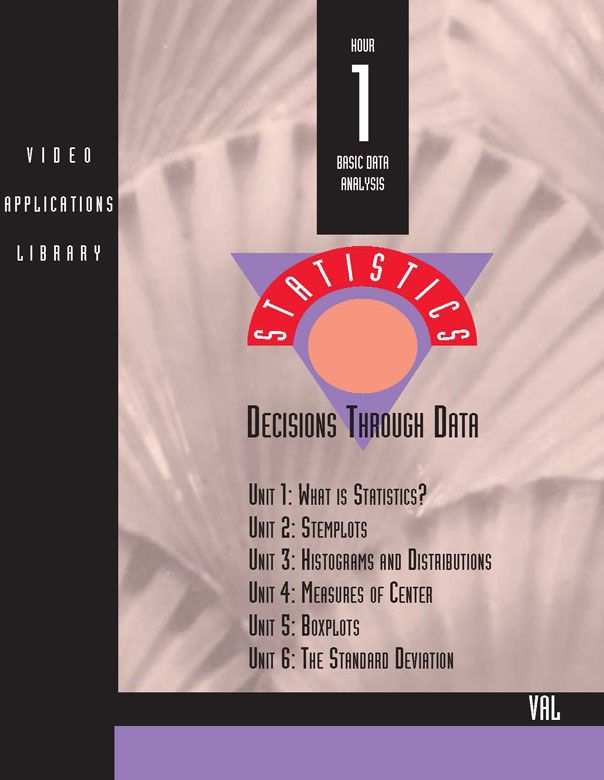Statistics: Decisions Through Data: Unit 6 The Standard Deviation
Author: COMAP, Text by David S. Moore
Statistics: Decisions Through Data is an introductory statistics course that unravels the statistical arguments behind surveys, polls, experiments, and product claims. Each episode begins with a documentary segment that engages students' interest, and then teaches skills to gather data, analyze patterns, and draw conclusions about real-world issues.
Unit 6: The Standard Deviation (9:18)
Summary of the Video
At Michigan State University, researchers are setting computer output from automated blood tests to music. Large numbers of such tests are routinely done in health checkups. Each prints out the levels of many different substances in the blood. It’s easy to miss an abnormal reading when scanning the output. The new idea: Play a note from “America the Beautiful” for each reading that is within the normal limits, and play a sour note for an abnormal reading. The sour notes catch attention immediately. To do this, we need to look at the distribution of normal readings and describe their spread or variability.
A graphic presents data on one substance from ten people. A stemplot shows the distribution to be roughly symmetric, without outliers. So we use the mean to describe the center. To measure spread about the mean, look at the deviations from . Some are positive, some negative. Square the deviations and average the squares by dividing by n – 1. That’s the variance s 2. Taking the square root of s 2 returns to the original units. That’s the standard deviation s. Animated graphics show the exact recipe for s 2 and s, but the narrator recommends using a calculator. The standard deviation is the basis for deciding when to play a sour note in the blood test.
The video then presents the basic facts about standard deviations: s is always zero or positive; s = 0 only when there is no spread, that is, when all observations have the same value; as the spread increases, s gets larger; s is strongly influenced by one or a few extreme observations.
Video support materials are available as part of COMAP full membership. Each video is accompanied by instructor’s notes, student exercises, group activities and quizzes.

Mathematics Topics:
Application Areas:
Prerequisites:
You must have a Full Membership to download this resource.
If you're already a member, login here.